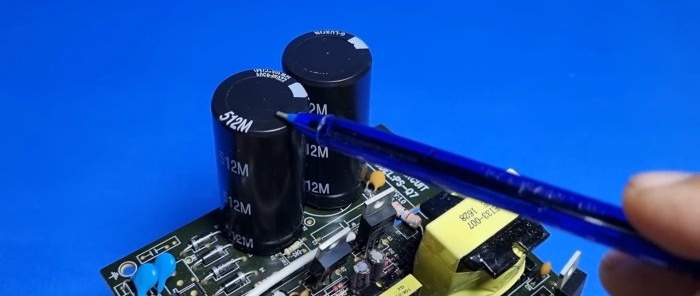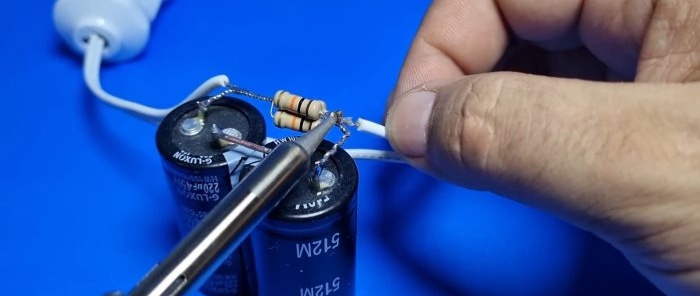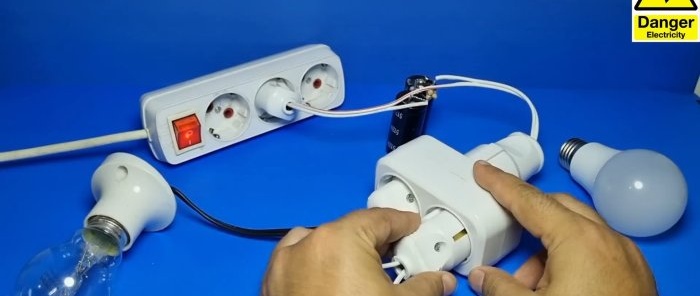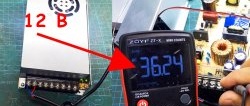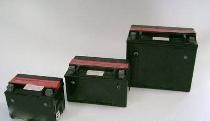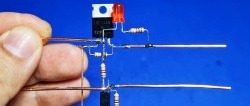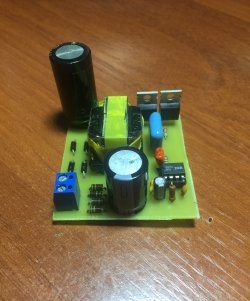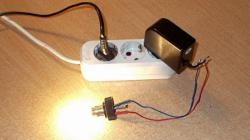Most radio amateurs, when testing their homemade products powered from the network, use an incandescent lamp as a fuse. For example, if you need to check, say, a switching power supply, then the first connection is made through a series connection with an incandescent lamp. Due to the fact that if there is a short circuit in the circuit, the lamp will simply light up and no consequences in the form of sparks or burnout of tracks will occur. This is the most classic method, but there is one big drawback: the power is limited, which means, say, a power tool or other powerful device cannot be tested with such a circuit. The way out of this situation is quite simple - by assembling an analog fuse on capacitors.
What you will need
For the next device you will need electrolytic capacitors of relatively large capacity and, more importantly, designed for high voltage. Suitable parts can be found in an old computer power supply. The progress of work is below.
The values of the soldered capacitors are 220 µF 450 V. They are connected by soldering to the negative terminals.As a result of this (remember the formula), a non-polar capacitor with a capacity of 110 μF is obtained, designed to operate in a network with a voltage of up to 900 volts. The voltage reserve is very correct. Considering that the alternating voltage values at the peak of the sinusoid reach 400 V.
Three 10 kOhm resistors with a power of 2 W each are connected in parallel. When connecting resistors in parallel, the power is added up and the result is a 6 W resistor. Resistors are soldered parallel to the positive terminals of the capacitors. Resistors are needed to discharge capacitors during operation.
DIY capacitor fuse
Next, a simple chain is assembled.
At the ends there is a power plug and a power splitter. The device assembled above from resistors and capacitors is sealed into a gap in one of the network wires of a two-wire line.
A regular light bulb is plugged into one of the sockets of the splitter. The voltage is 220 V. Capacitors and resistors connected in series to the network provide virtually no resistance to alternating current. The lamp is on.
And then the most interesting part. If you insert a plug with shorted contacts into the free socket of a voltage splitter, then... Short circuit? Explosion? Not at all. There is no short circuit. The lamp simply goes out. And the type of lamp does not matter. Everything works with both LED and conventional incandescent lamps. Miracle? Of course not. The explanation is simple.
In fact, no short circuit occurs. After all, the circuit contains electrolytic capacitors. And the current in the circuit will be limited by the voltage drop across them. Simply put, capacitors begin to work, creating a capacitive load.
Where else can such a device be used? Interested to hear your application options.There is enough power even for a drill without a noticeable voltage drop.

